fall inside a hole
700 Series Shinkansen
First written April 10, 2024Expanded May 2025
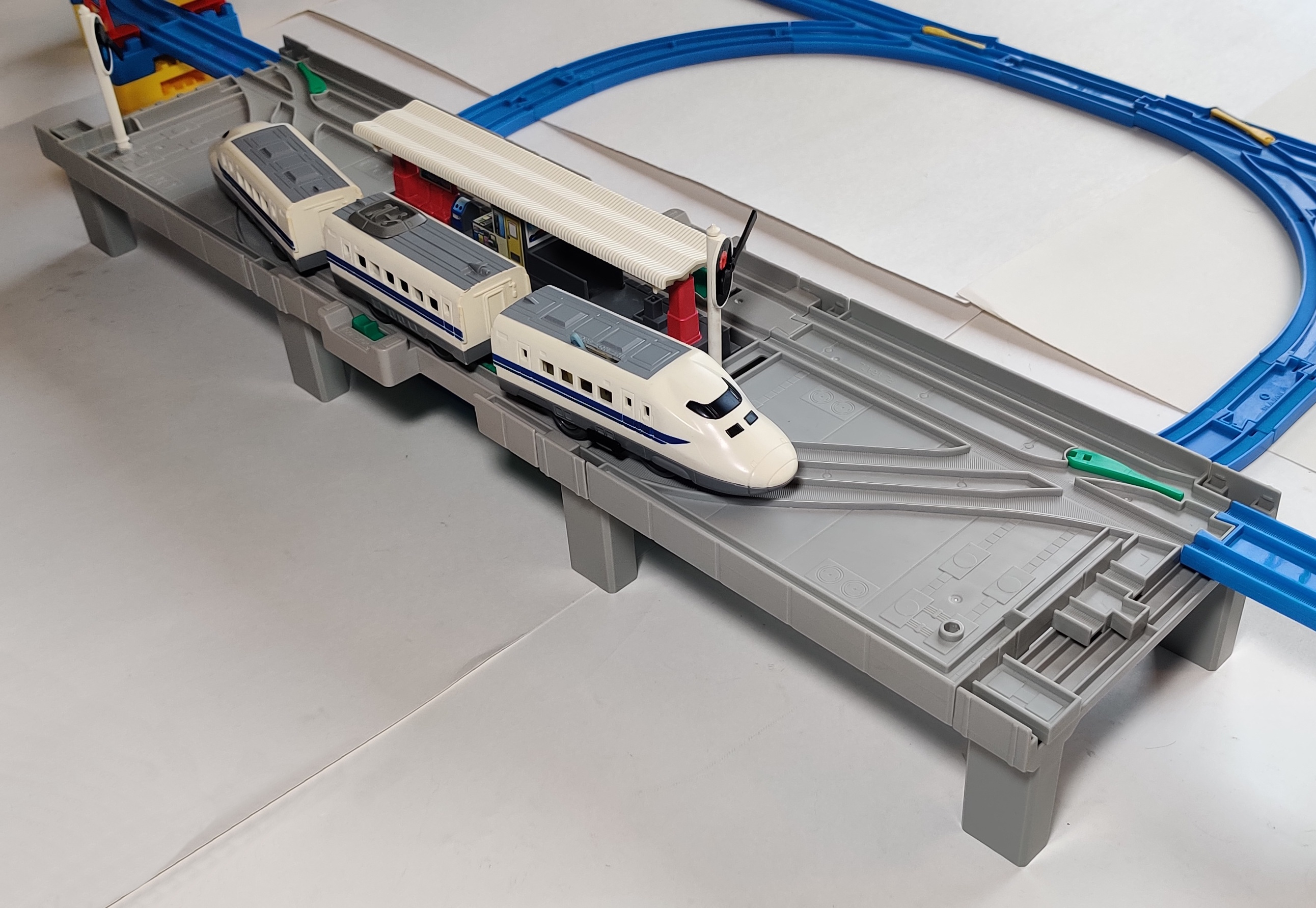
The 700 Series Shinkansens were built between 1997 and 2006 and entered service in 1999. The 700 series was built on the 300, 500, and 300X series concepts and was designed jointly by JR Central and JR West. After the jet-like nose of the 500 series trains, these 700 and several later Shinkansen designs would use a flatter "duck bill" nose to help enter tunnels at high speeds. The 700 series has already been retired from service on the Tokaido shinkansen line for a few years although 700 series trains still operate as the Hikari Rail Star on the Sanyo shinkansen line.
700 Series Shinkansen (1998)

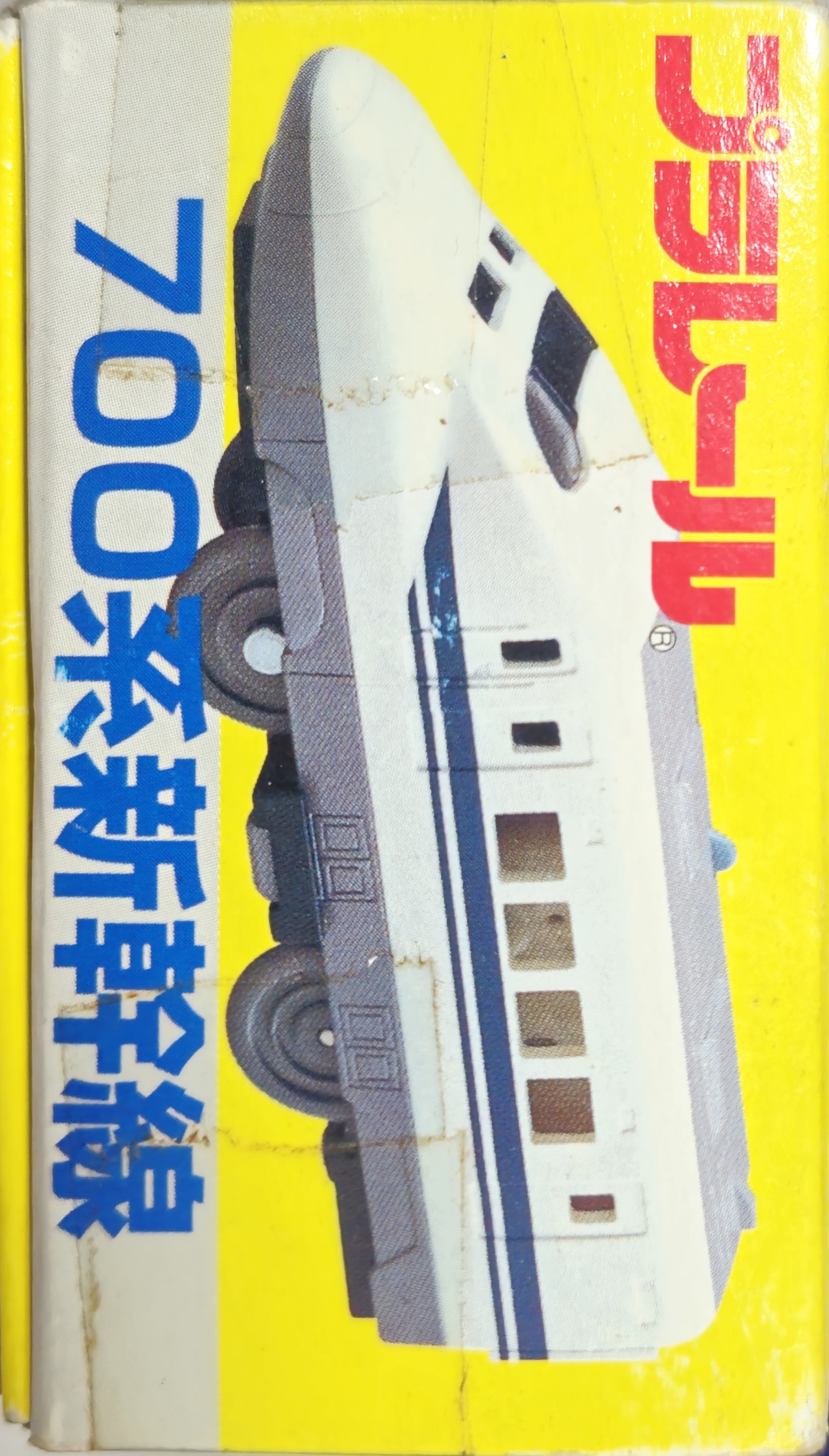

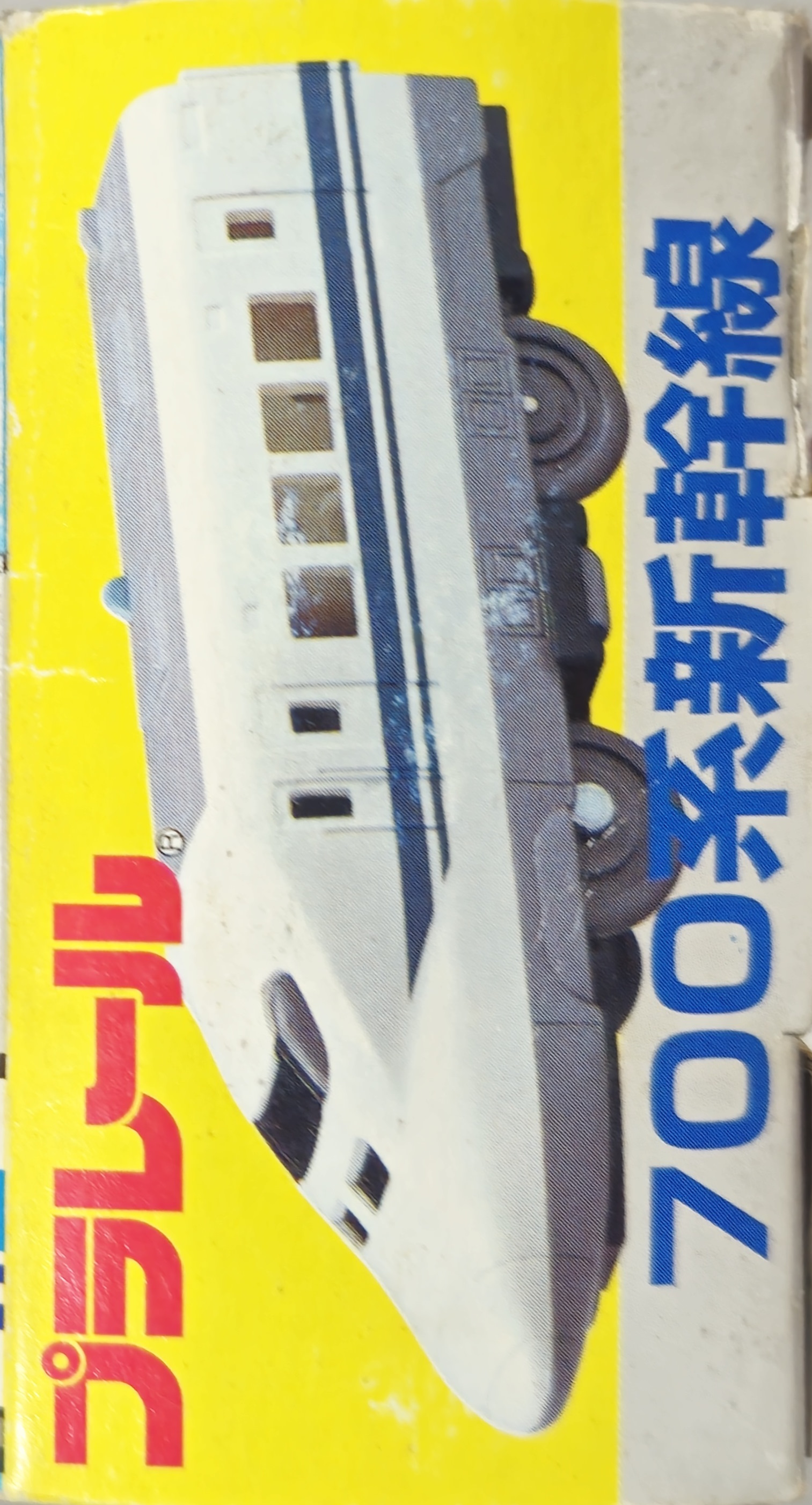


The Plarail 700 Series Shinkansen (700系新幹線) was first released in 1998 in seventh generation packaging. The battery instruction panel uses the illustration of the 500 Series Shinkansen which uses the same AA battery chassis. The rear of the box says of the 700 series, approximately: JR Central and JR West jointly developed the newest Shinkansen using technology from the 300, 500, and 300X series. It is called an aerostream type and is characterized by its rounded top shape.
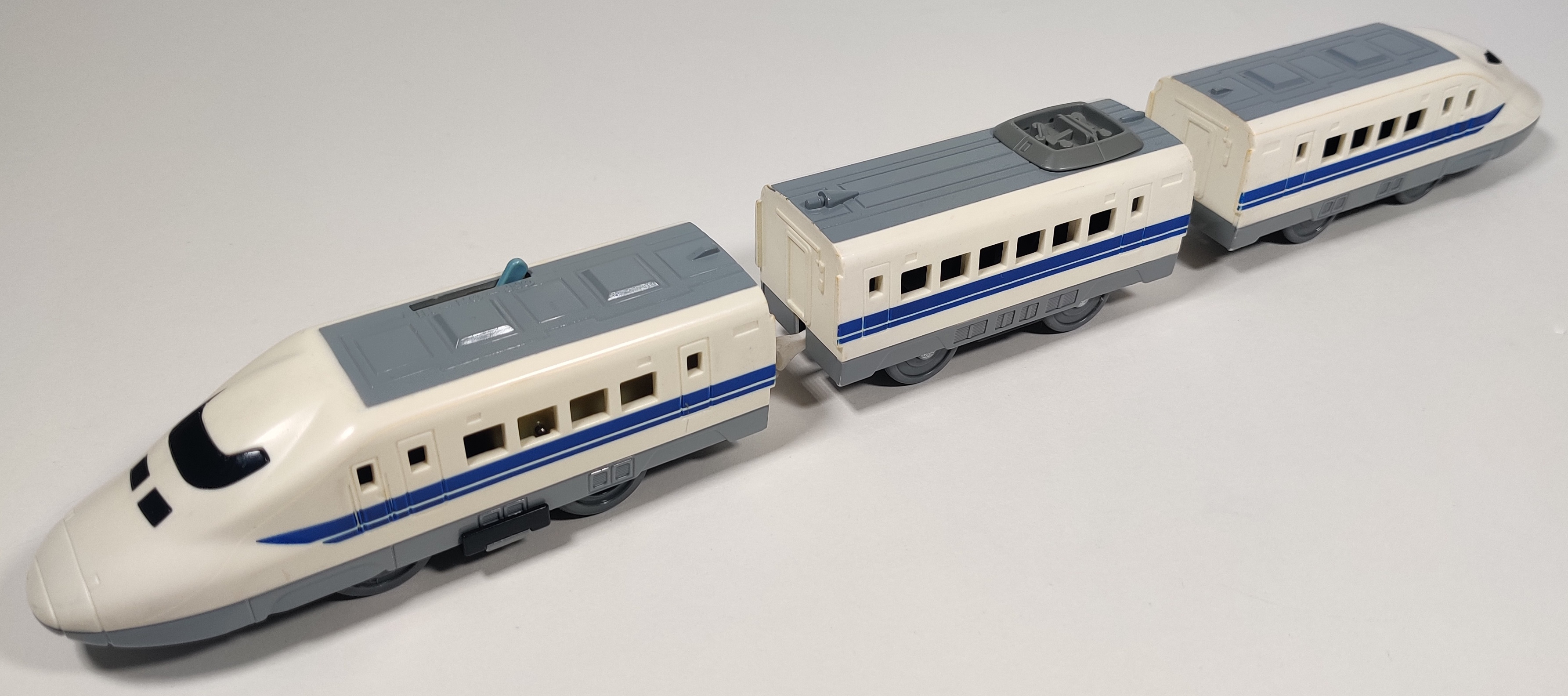
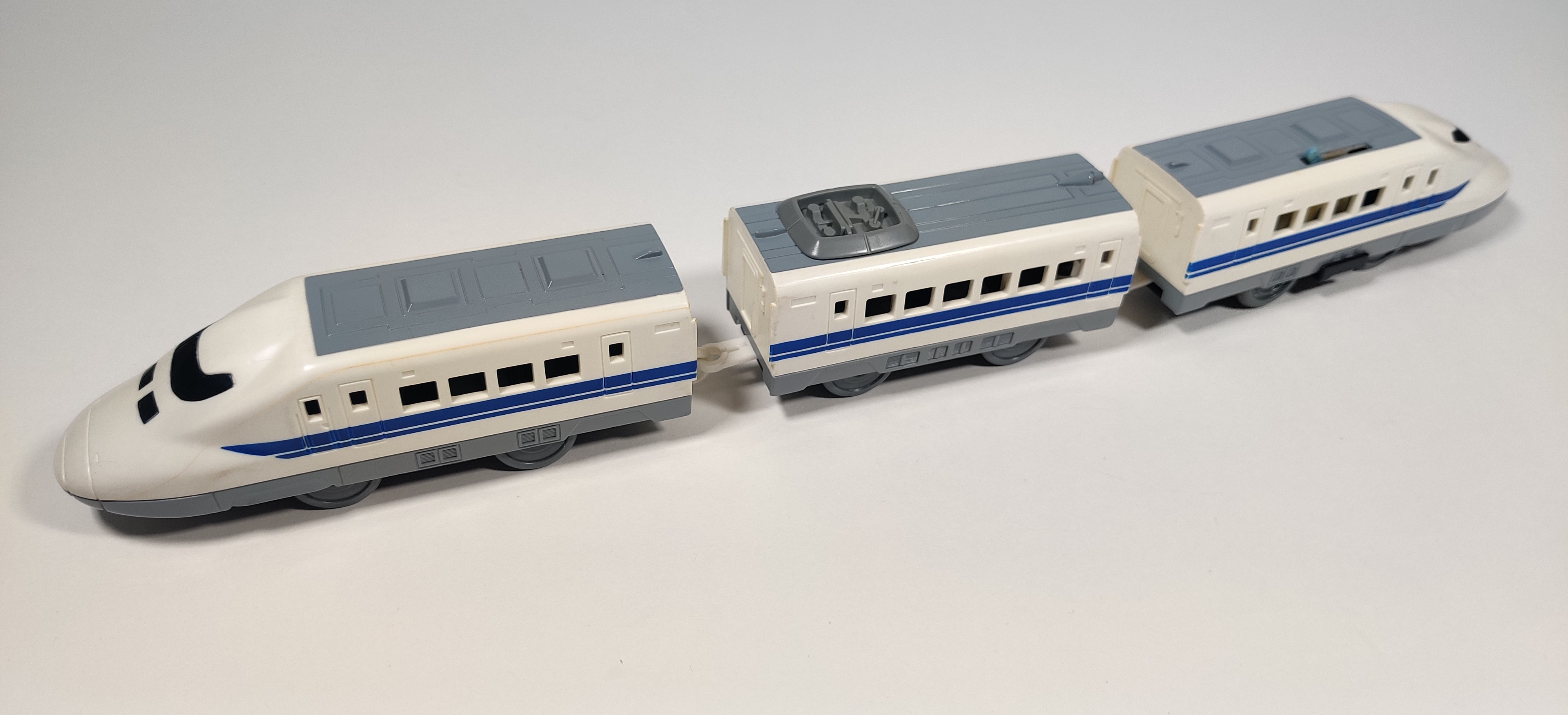
The design of the 700 series returns to the design language established by the 0 series and followed by the 100 and 300 series Shinkansens before the 500 series' departure. A thicker blue stripe sits on top of a thinner stripe, swiping upwards at either end of the train.


From its introduction the 700 series had a grey roof and additional undercarriage details not often included on earlier trains. I will admit that I think the earlier clip-type body shells integrate into their chassis a little bit nicer, and on some trains the chassis clips sticking out looks a little odd.
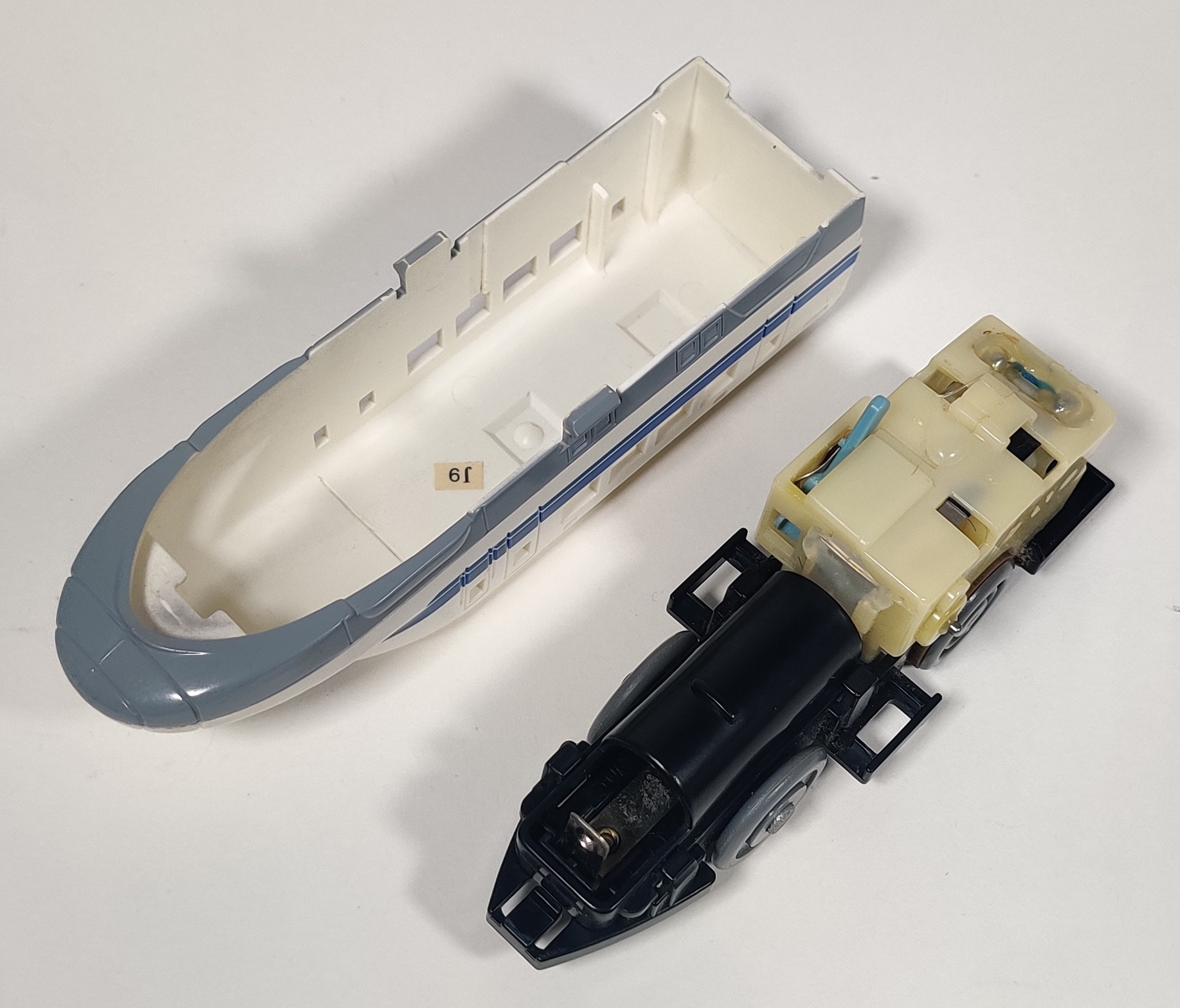
Actually, this 700 series comes from the 1999 700 Series Departure! Shinkansen Station Set, not the 1998 print box above - I got the box in a lot with several other later 1990s boxes, but the 700 train itself was not included, which is just as well as I did not really need another after owning the very nice Shinkansen Station set.

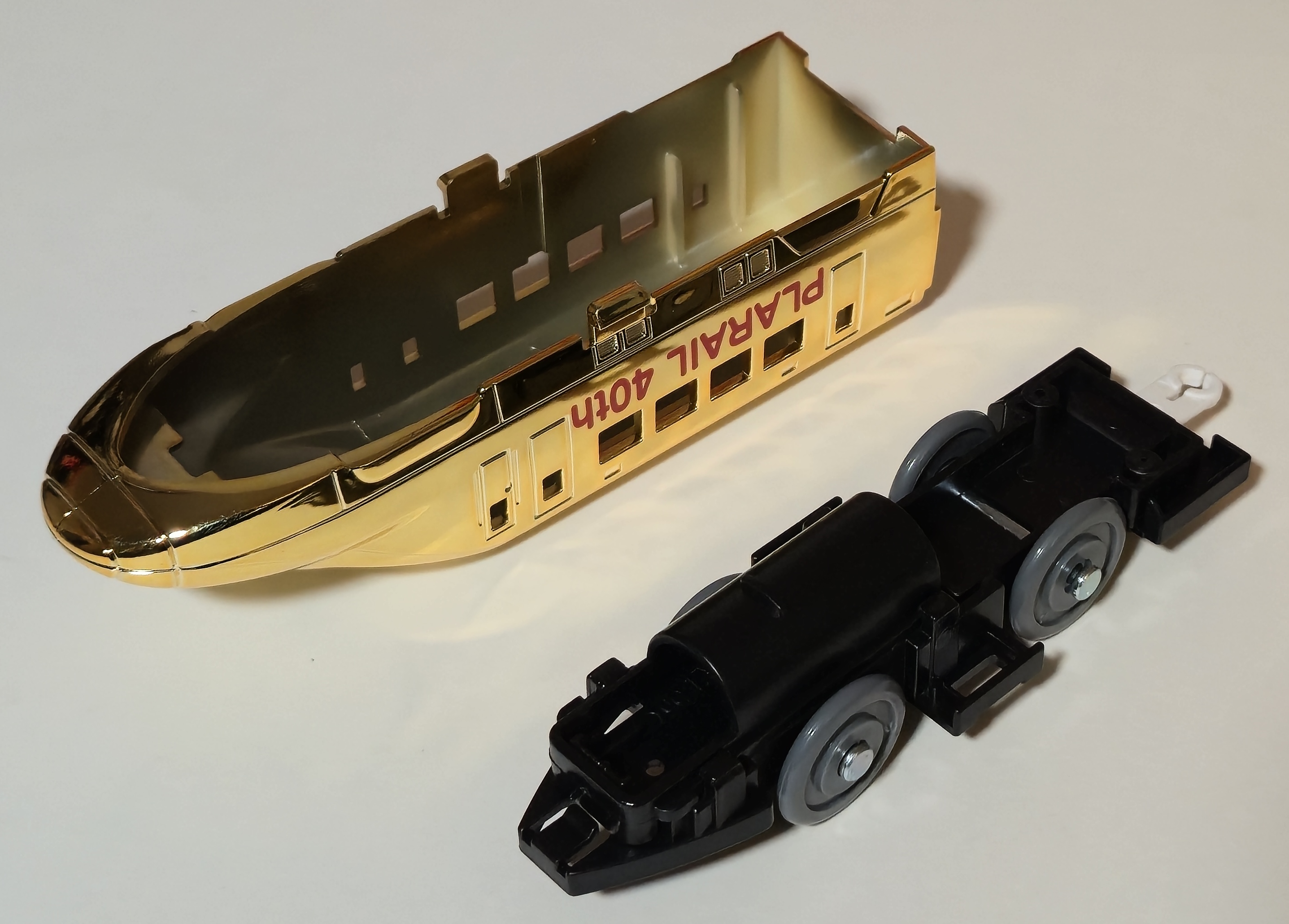
In 1999 for the 40th Anniversary of Plarail a shiny gold 700 series power and tail car was included with a commemorative VHS video in the Gold-Plated 700 Series 40th Anniversary Plarail Memorial Video pack. This train is unpowered and has the battery slot glued in and a blanking plate holding the wheels in place where the gearbox is not. The body shell can be put on a regular 700 series or other AA Shinkansen-style chassis.
700 Series Shinkansen (new pantographs) (2002)
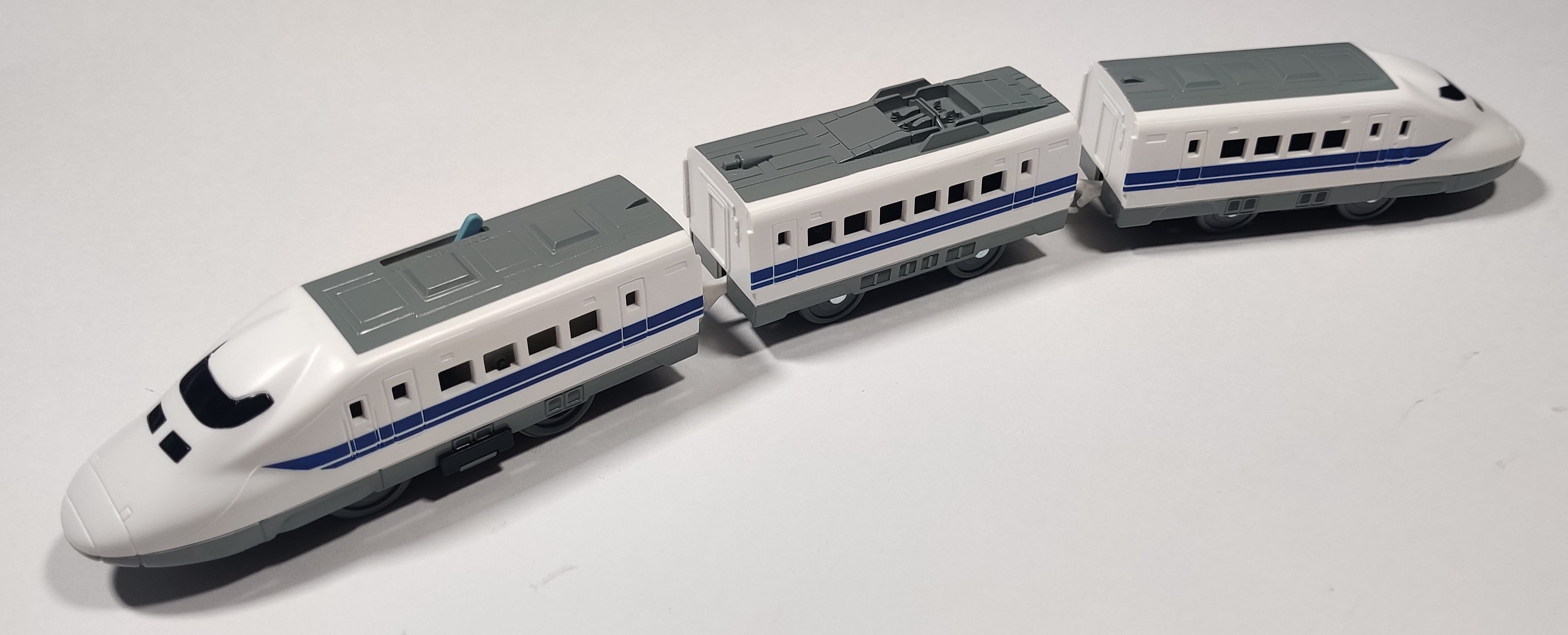
Around 2002 the tooling was updated in preparation for the revamped Shinkansen range, but later seventh generation box examples like the one shown below used the new tooling and thus new pantograph design with the original detail application.

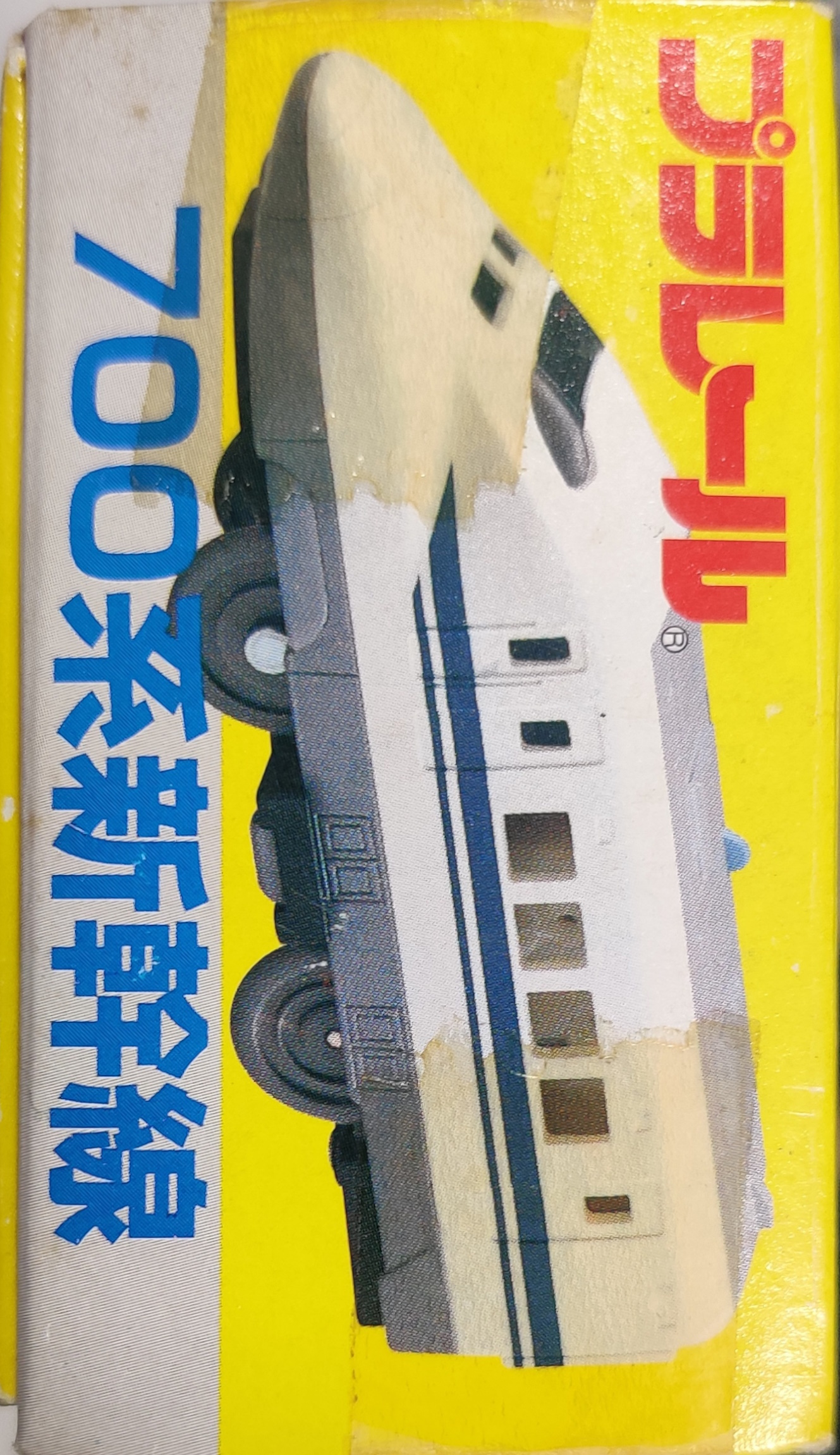

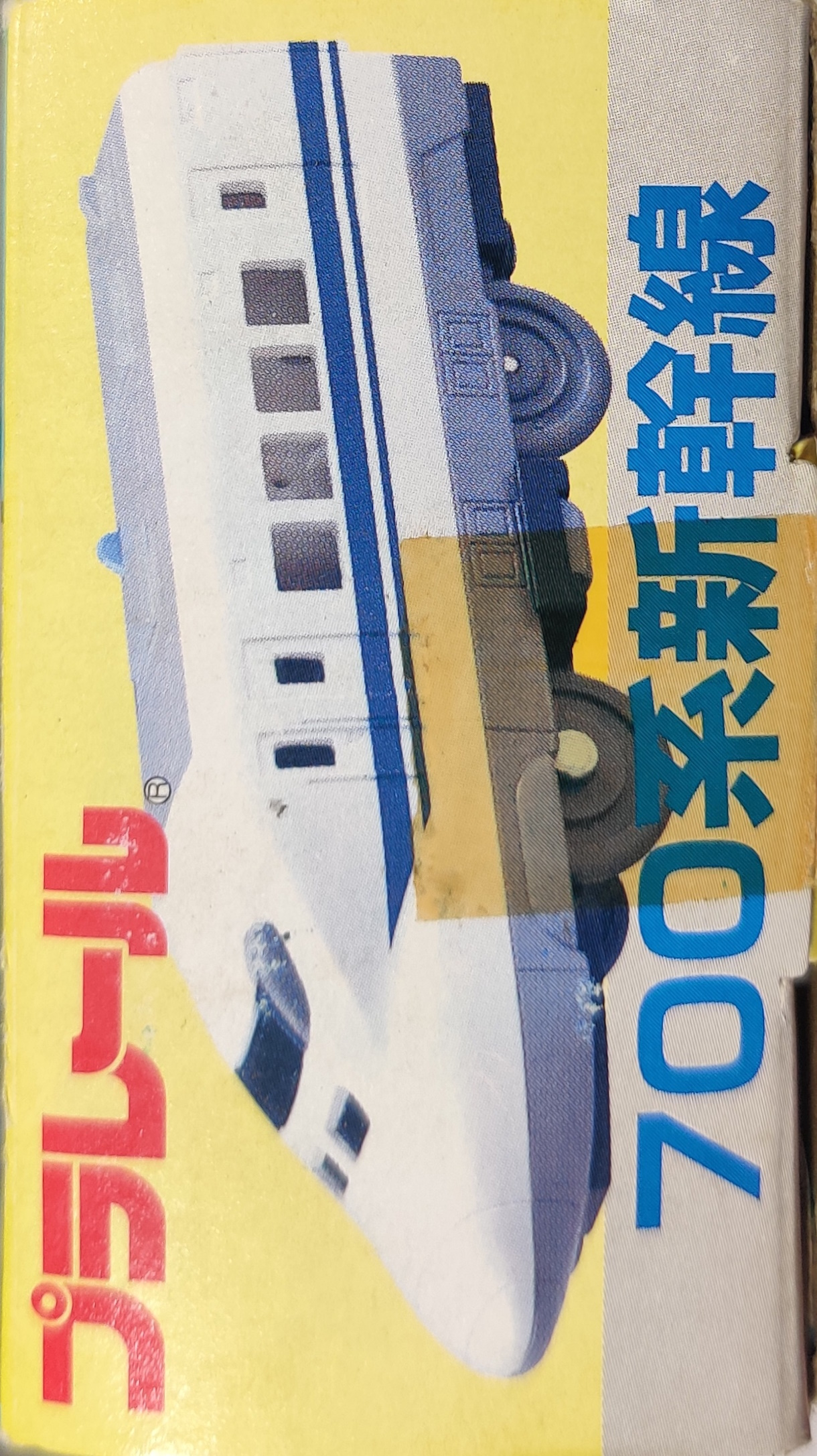


The seventh generation box shown here is a later 2000 box printing as evident by the ST0 mark on the rear.
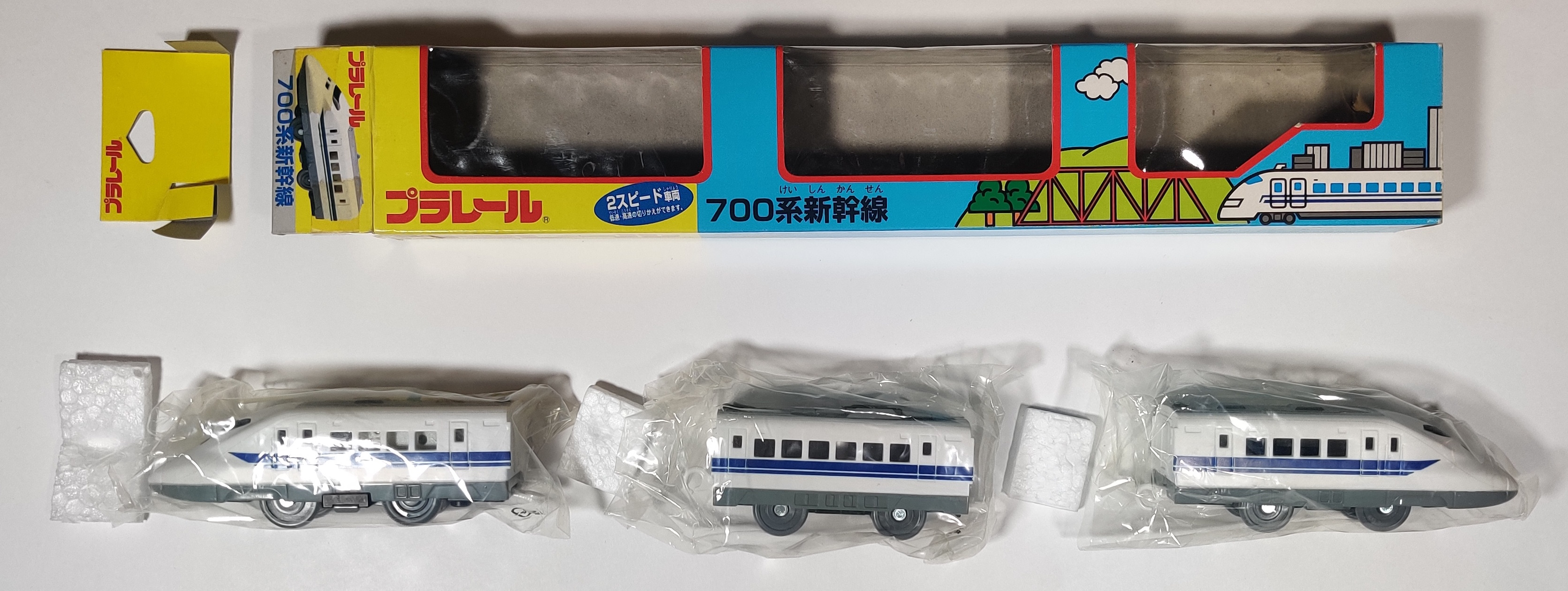
My early 2000s 700 series came individually bagged in between the usual foam blocks.

Other than the pantograph and other tooling changes, there is not really anything different between the decorations of these trains and the earlier ones.
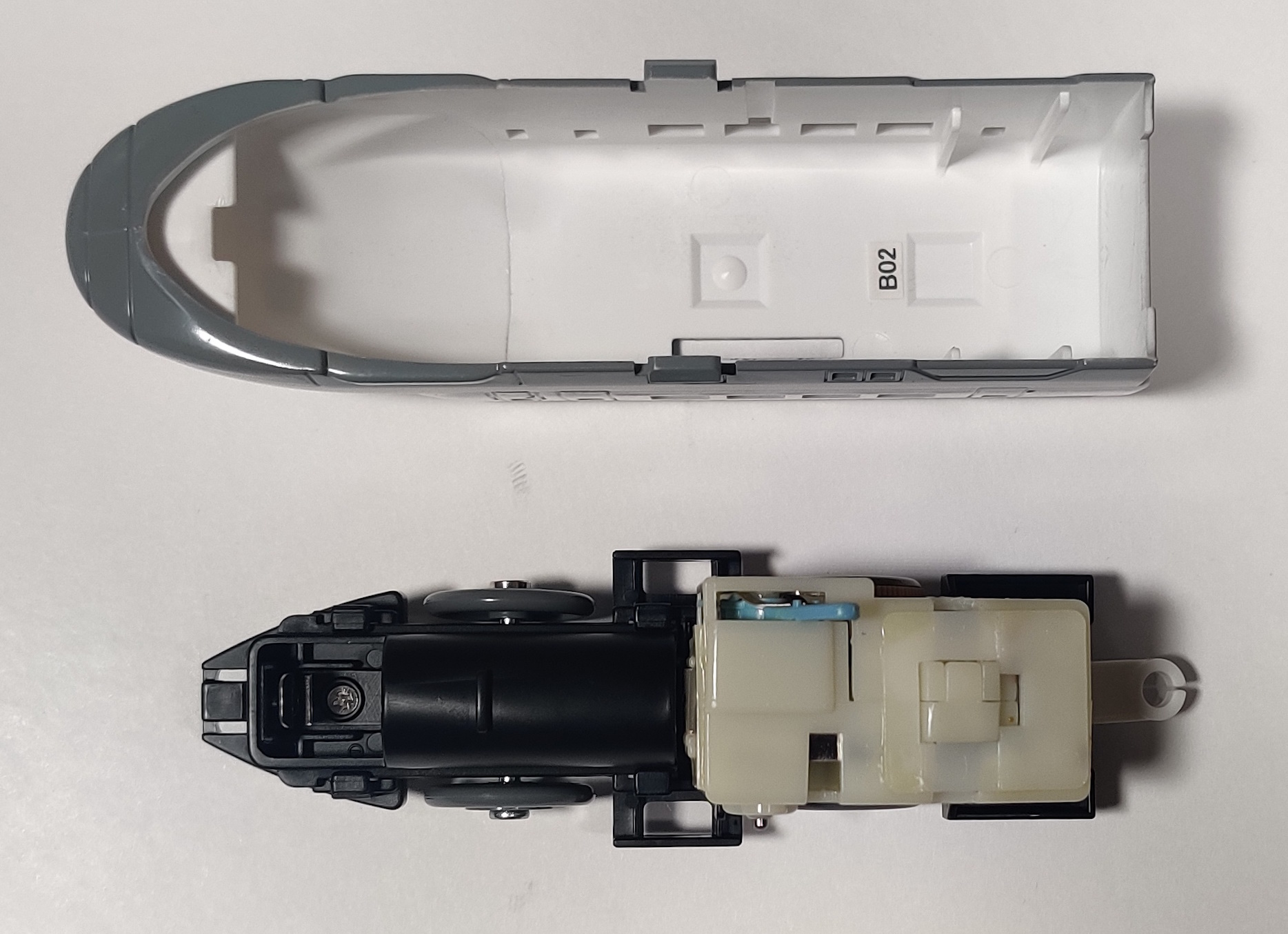
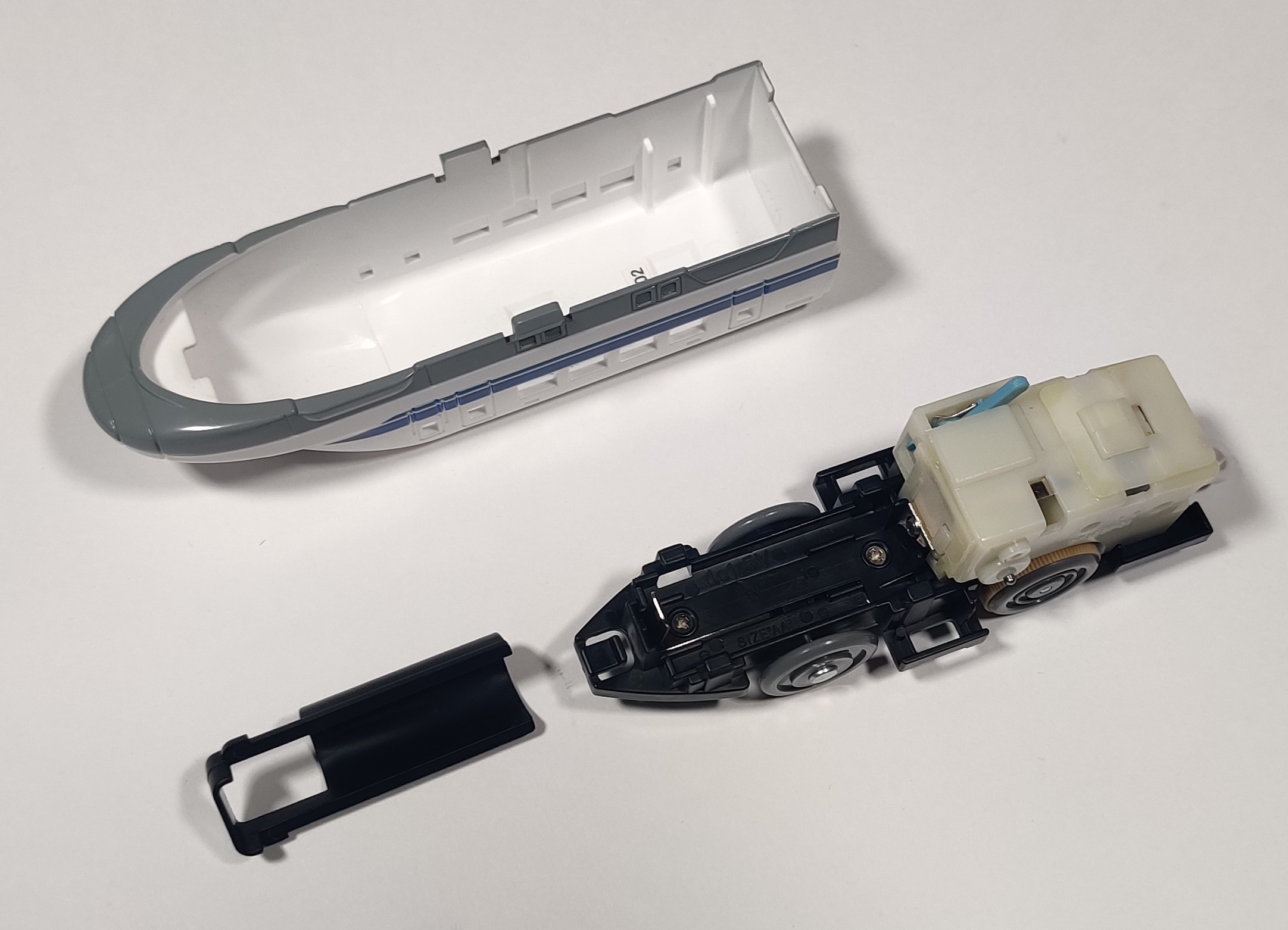
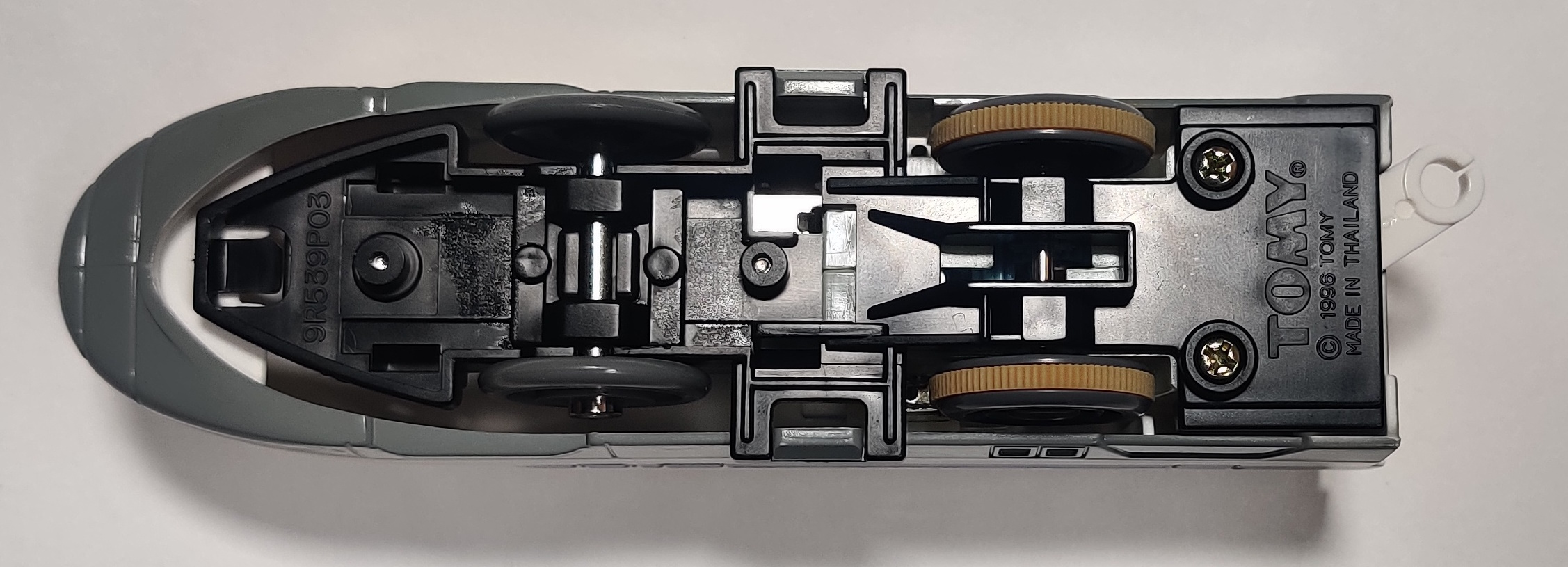
The power car reveals this is a late seventh generation production 700 series - the revamped S-01 700 Series Shinkansen would appear around July 2002. Indeed, this was so late in production that the AA new power chassis used for the 500 and 700 series trains had already been updated with the new straightened-off Tomy logo.
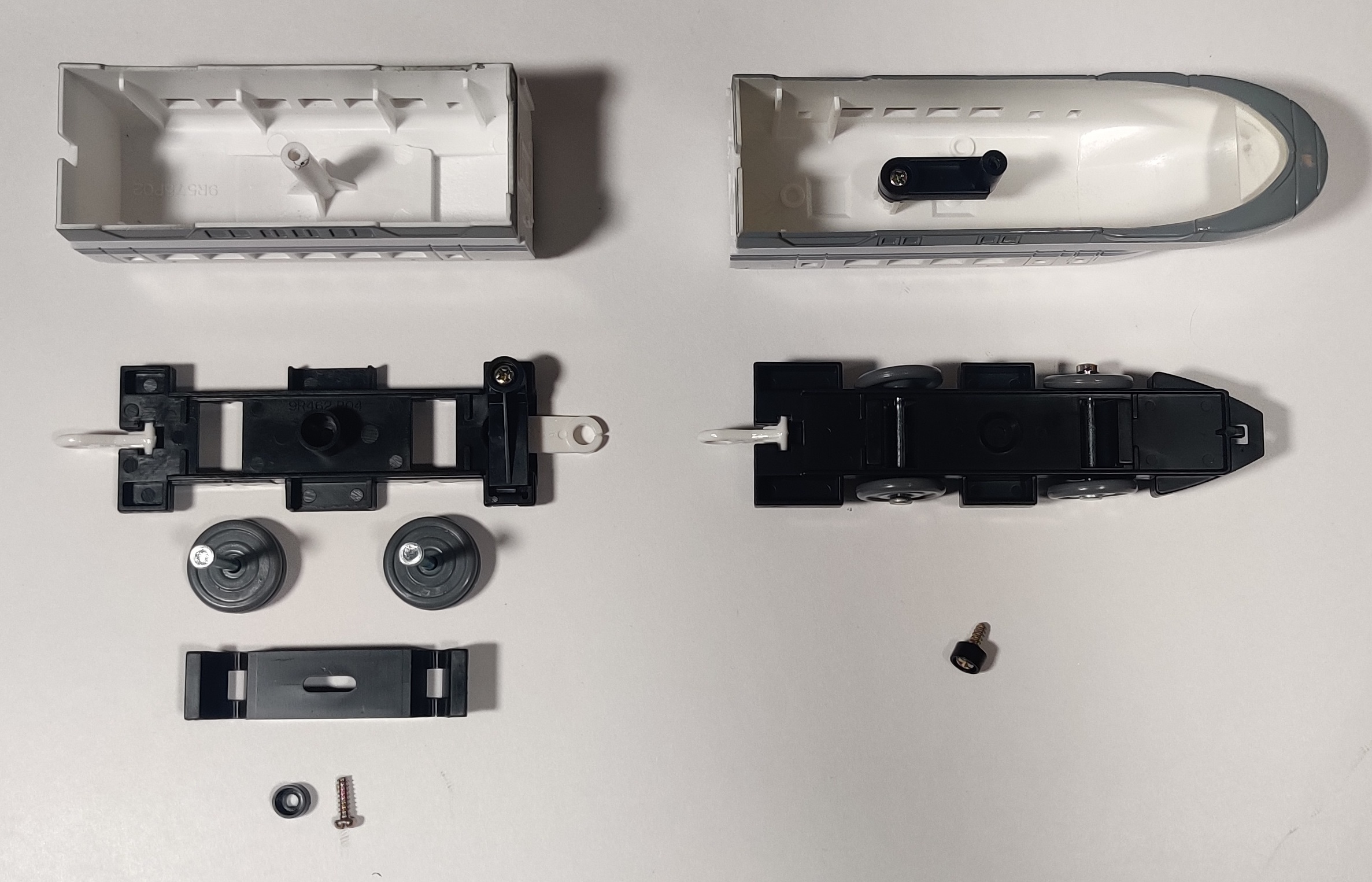
The cars are made with standard construction of the time, with an offset adaptor in the tail car. For some reason, the train uses the older single-split coupler type - these seem to appear sporadically throughout the 1990s and early 2000s, even in export items, but it seems they used them all up by the 2003 brand refresh.
S-01 700 Series Shinkansen (2002)
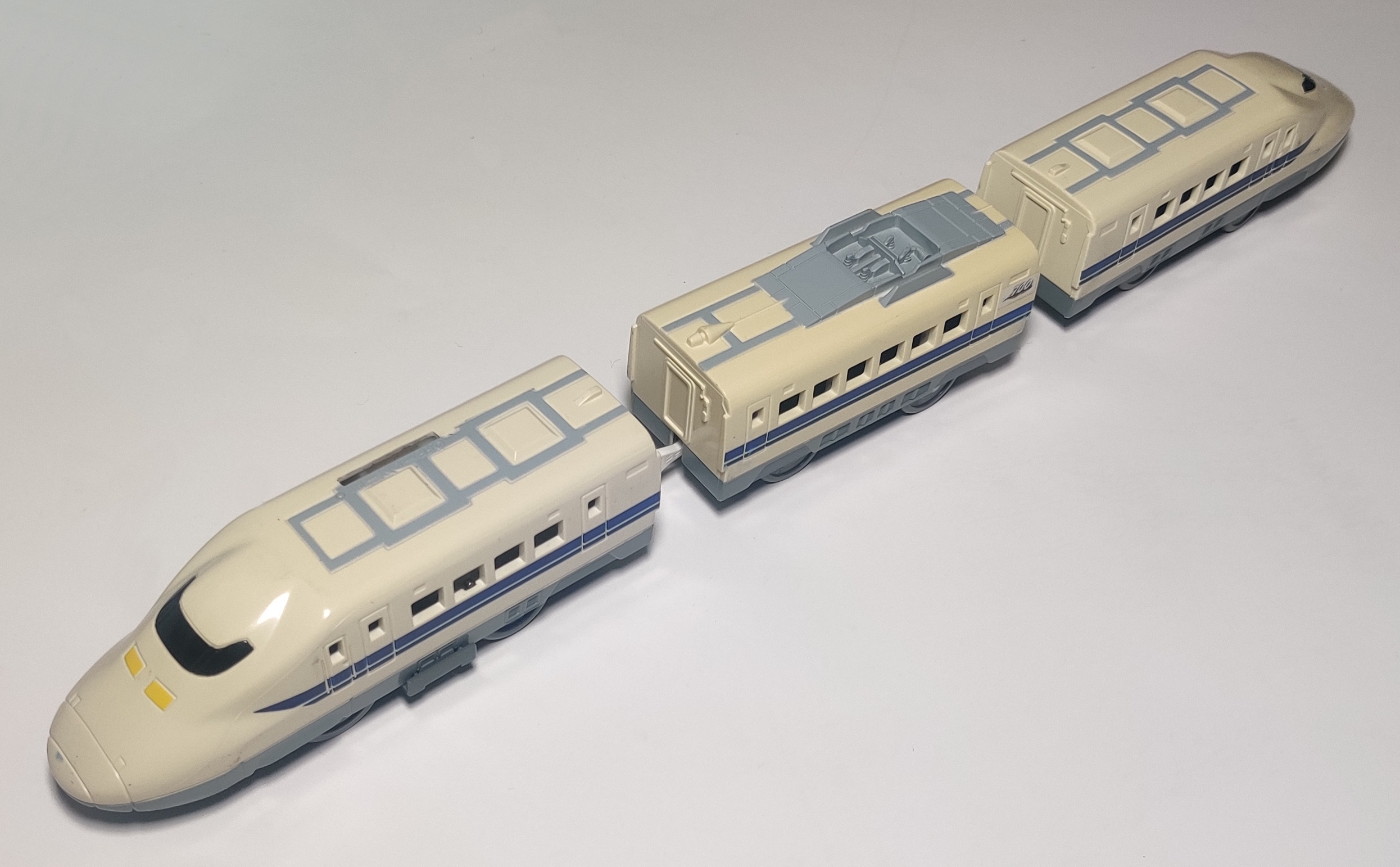
In the summer of 2002 the new S-01 700 Series Shinkansen (S-01 700系新幹線) would hit shelves with a grey chassis that better matches the slightly-more-detailed undercarriage.

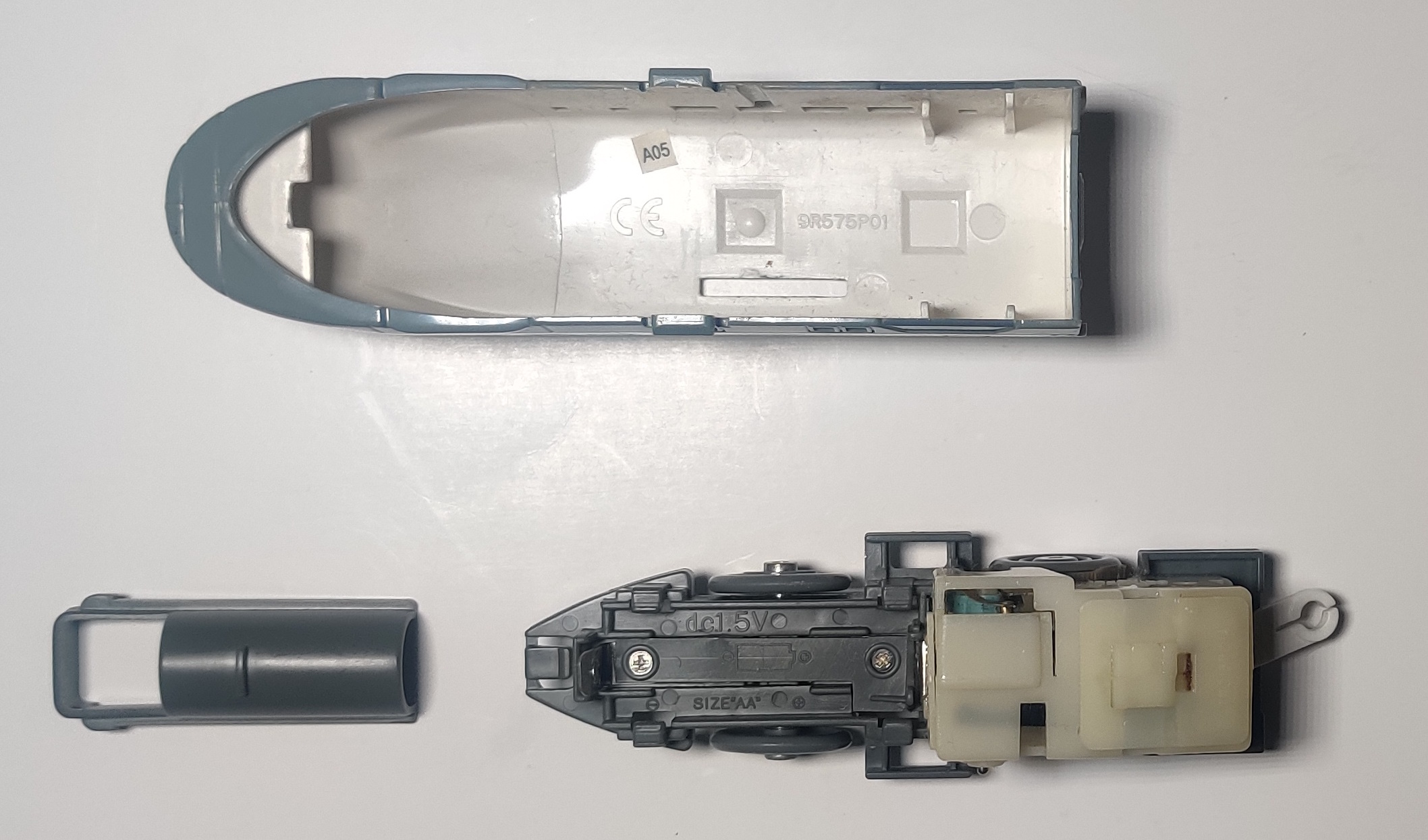
The intermediate car has a "700" sticker affixed to it. The chassis are grey but the cars are otherwise constructed the same as the previous 700 series cars. This example is yellowed, currently has a broken power switch, and dates to January 2005.
S-01 700 Series Shinkansen with Light (2007)
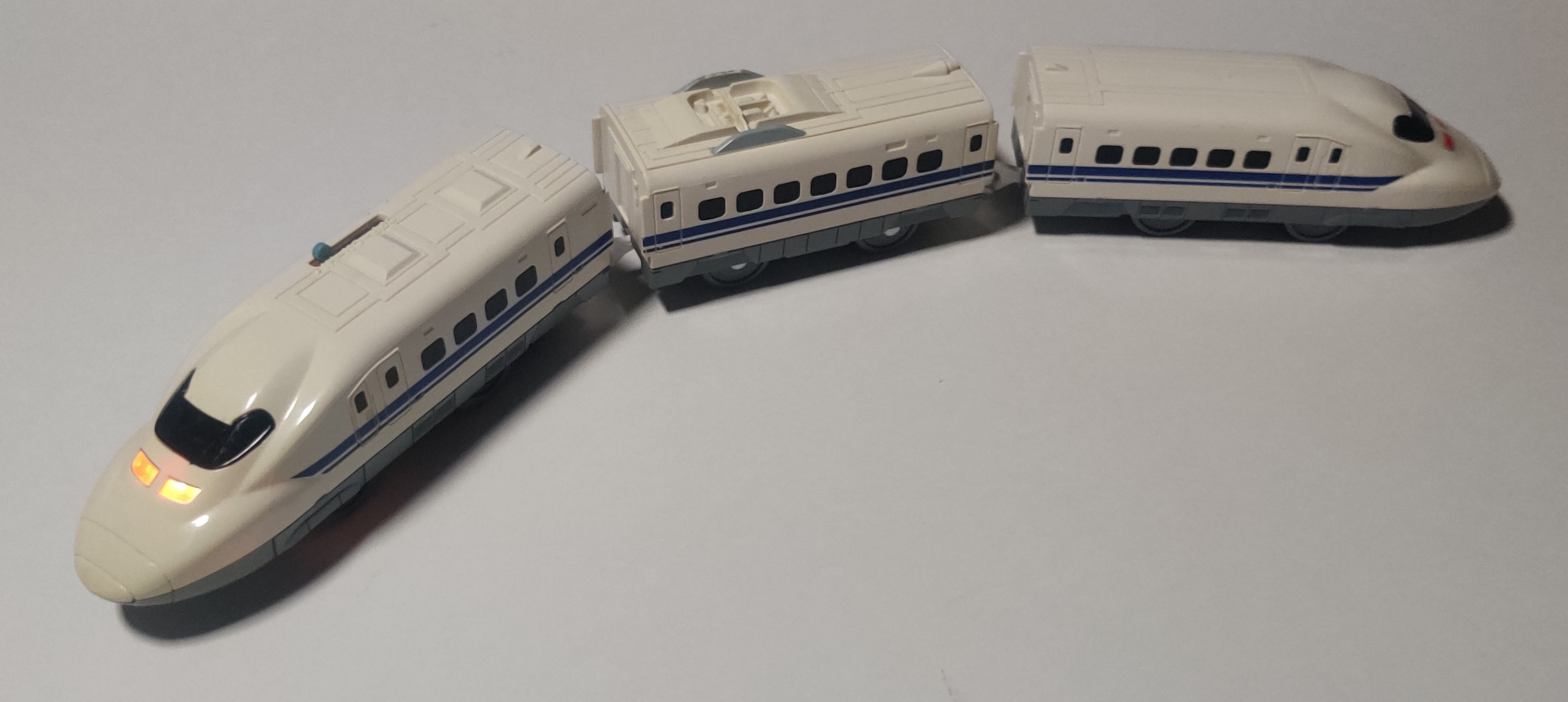
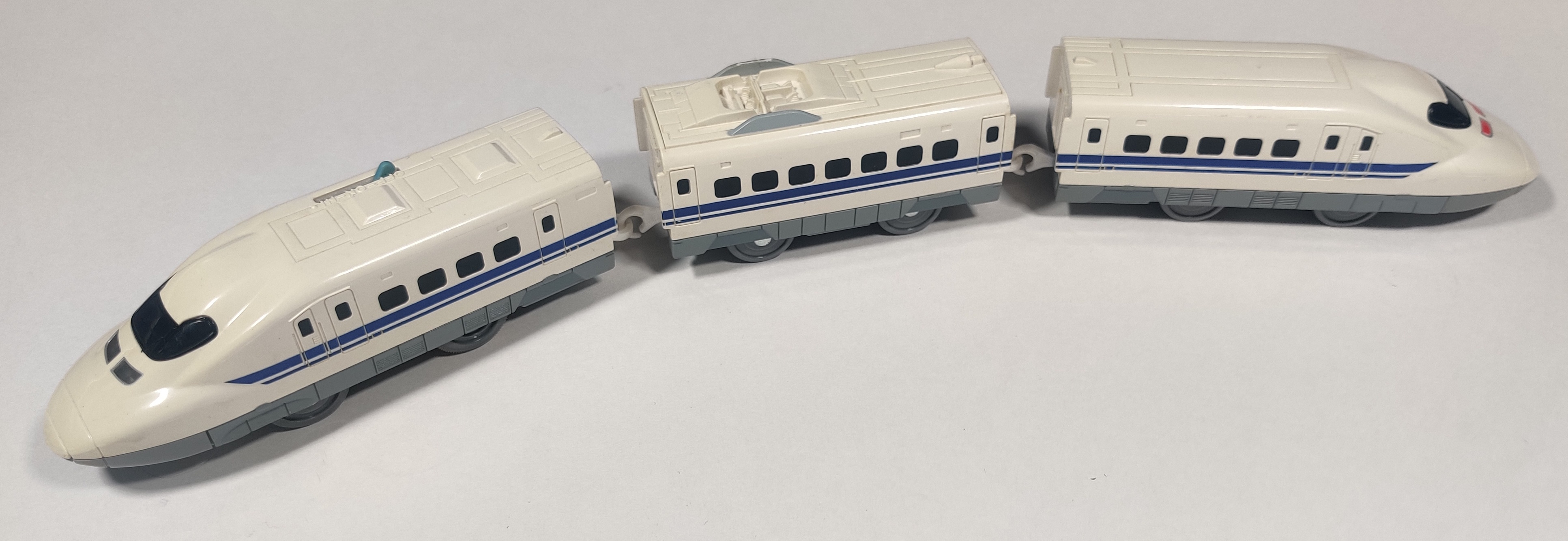
In 2007 the 700 series was updated to have a light and was released as 700 Series Shinkansen with Light (ライト付700系新幹線), harkening back to the days when Plarail's premier Shinkansen the 0 series Hikari came with a light as standard. Its a neat feature, to be honest.
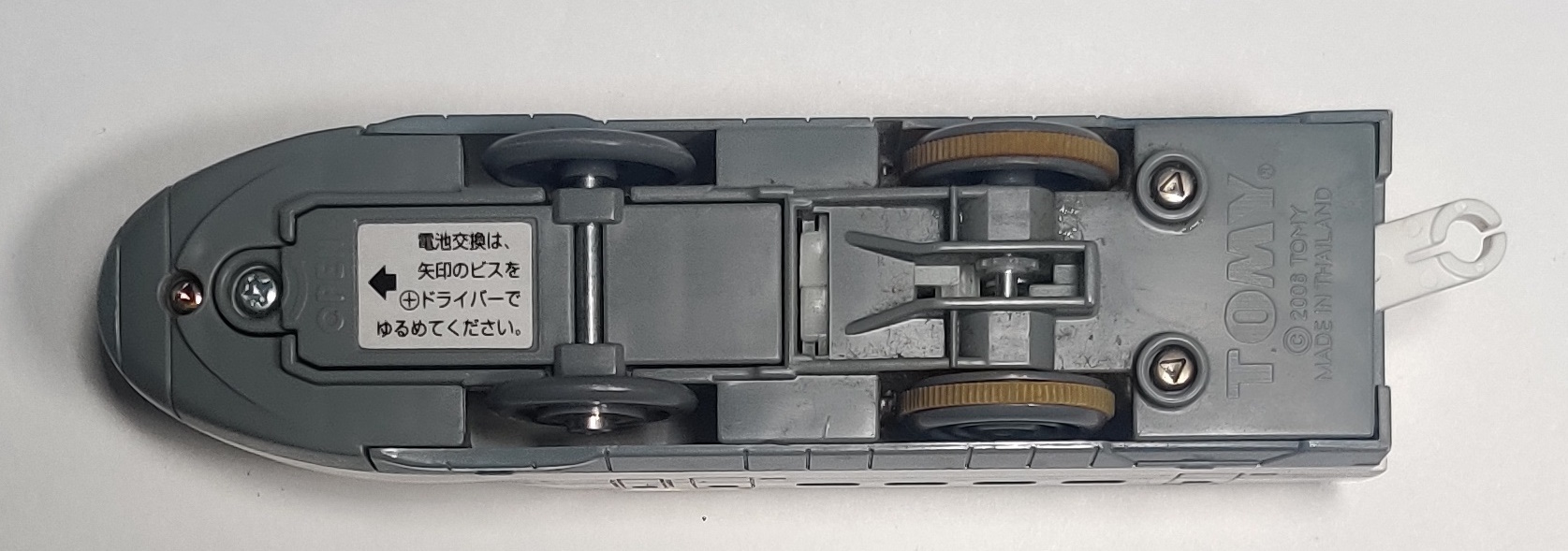
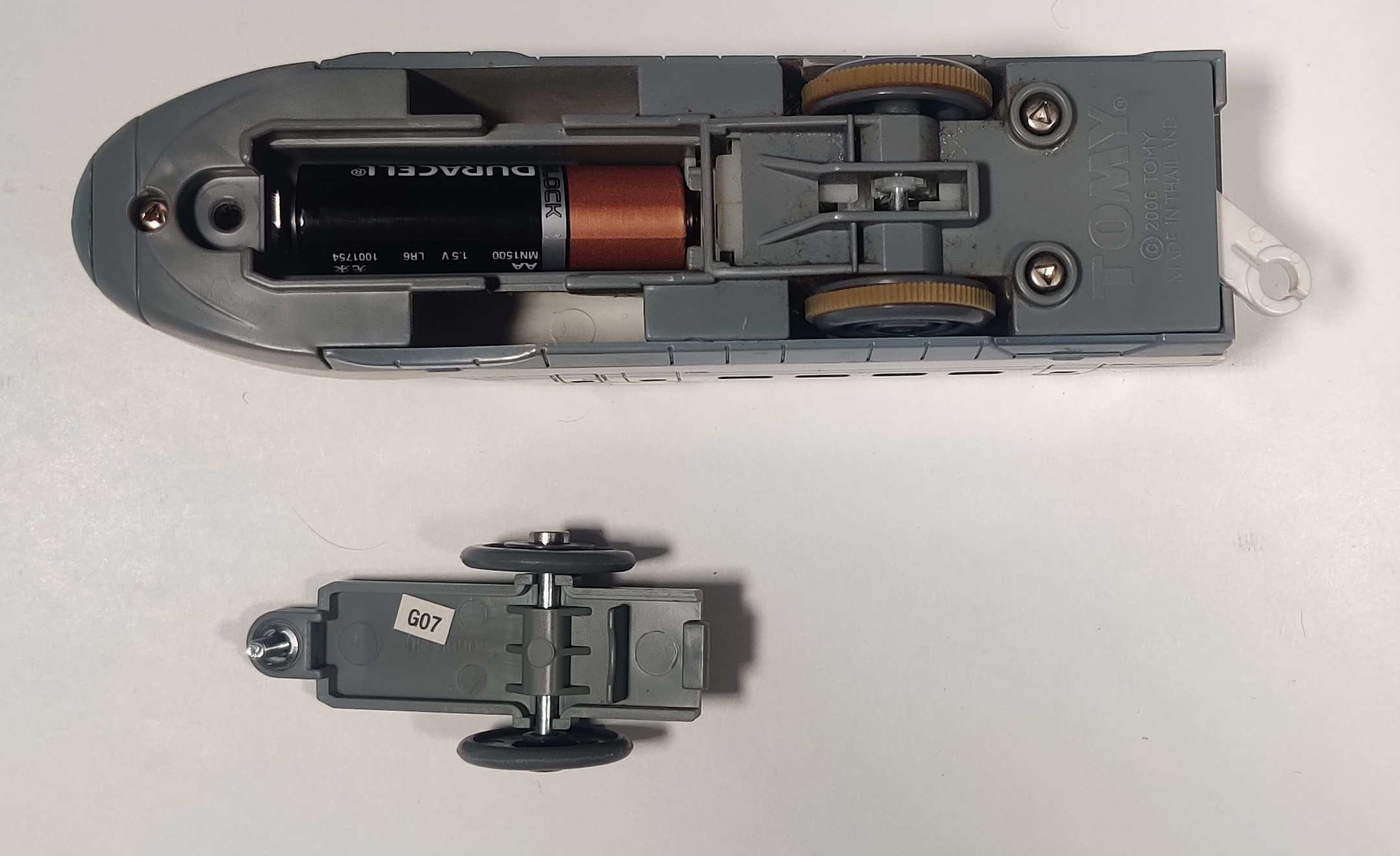
This 700 series actually used a redesigned chassis that took a single AA battery inserted at an angle under the front wheels, which are removable. The light in these trains is rather nice, with an incandescent glow and a light-spreader plastic insert behind the headlight.
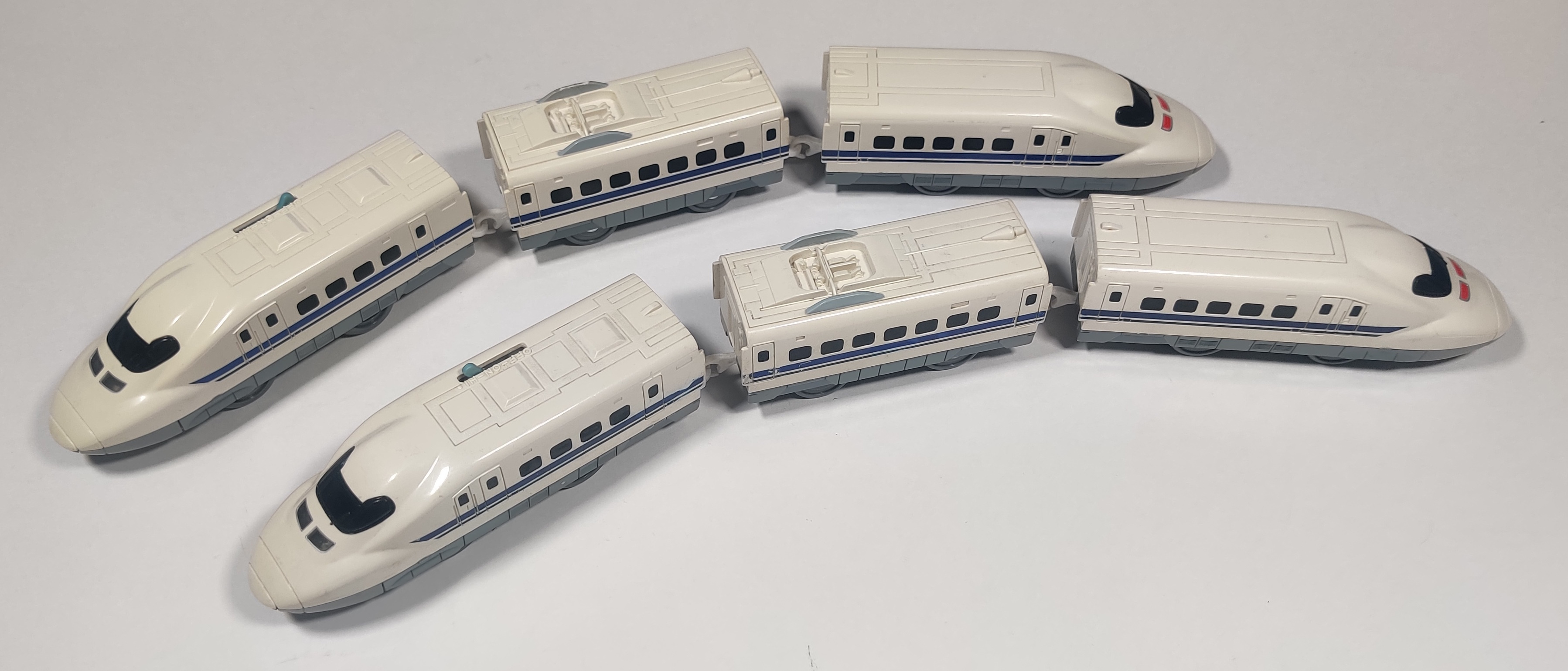

Being a current and fast Shinkansen and the first in the range, the 700 Series Shinkansen with Light is fairly common and was even put into a basic set like previous Shinkansens had been. I have a few of these trains in varying condition from being played with. They are also somewhat susceptible to turning yellow with sun, heat, or smoke exposure, as many lighter plastics are.
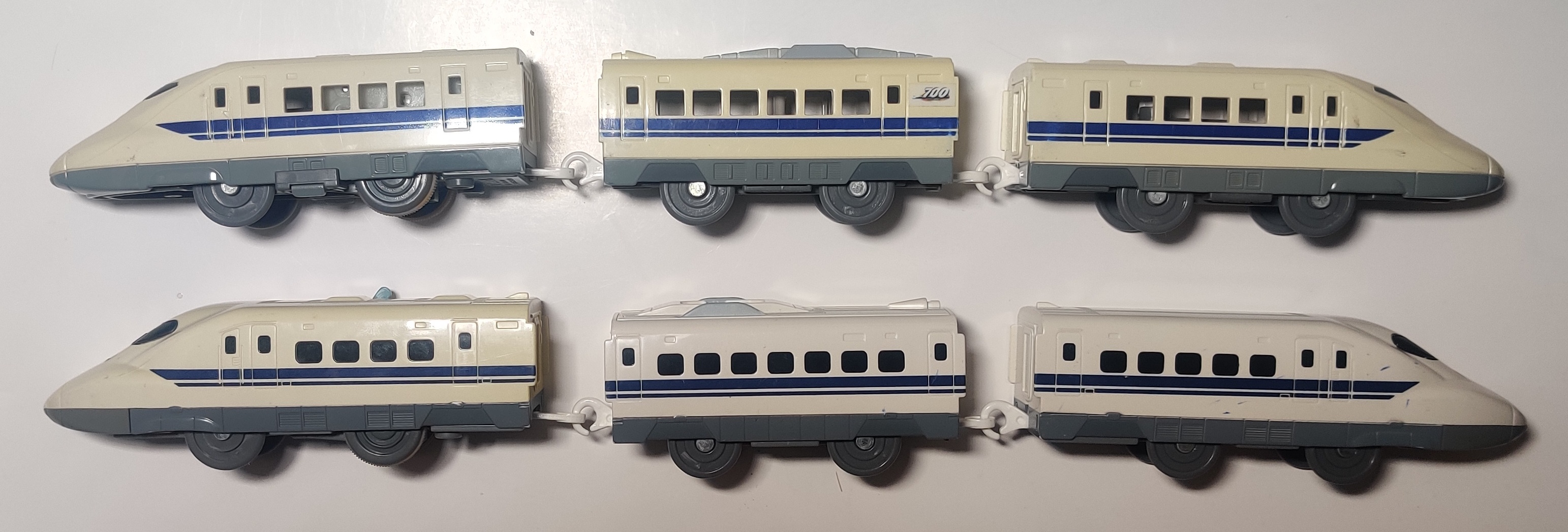
The intermediate and tail car toolings are new with filled-in more rounded windows. The new "default" intermediate car has the pantograph in a different configuration. I must admit, I do not know all of the details of every type of car used on these Shinkansens and could not tell you which type or class of car the rear versus front pantograph or different door configurations indicate.
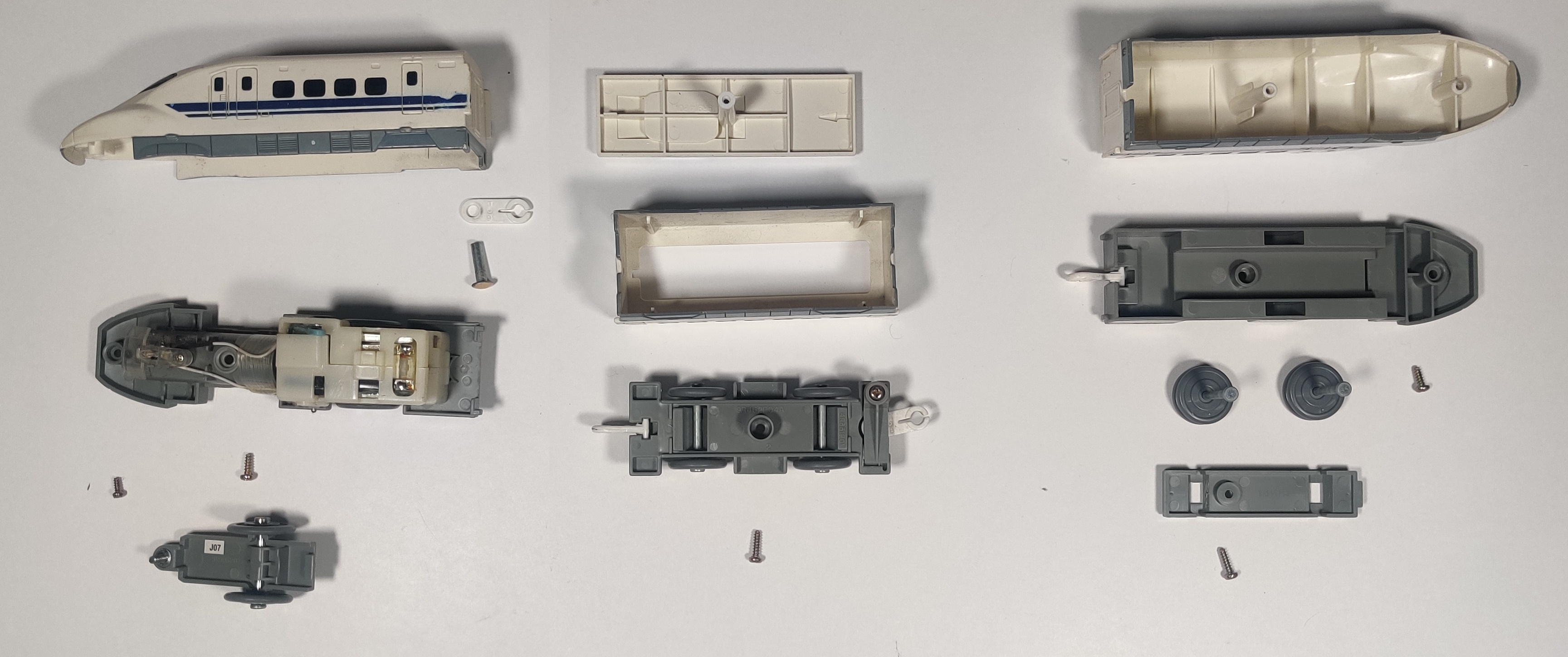
A standard cross-headed screw and a small triangular safety screw under the nose hold the chassis into the body shell. A small bulb is taped into place and wired into the gearbox like previous lit Plarail trains. Two larger triangular safety screws hold the gearbox in place in the chassis, presumable to make it clear (along with the marking in the tooling) which screw to undo. Oddly, the rear coupling is held into the body shell with a free-floating metal pin with a painted head which is held in place when the chassis is properly affixed. The intermediate car has a separate roof insert and body shell, which I believe was used to produce longer multi-car trains that had different combinations of pantographed/unpantographed roofs with different cabin designs to represent different types of cars in the real trainsets (several times longer than just the three cars Plarail typically depicts). The tail car has a thick chassis insert that fits inside the body shell.
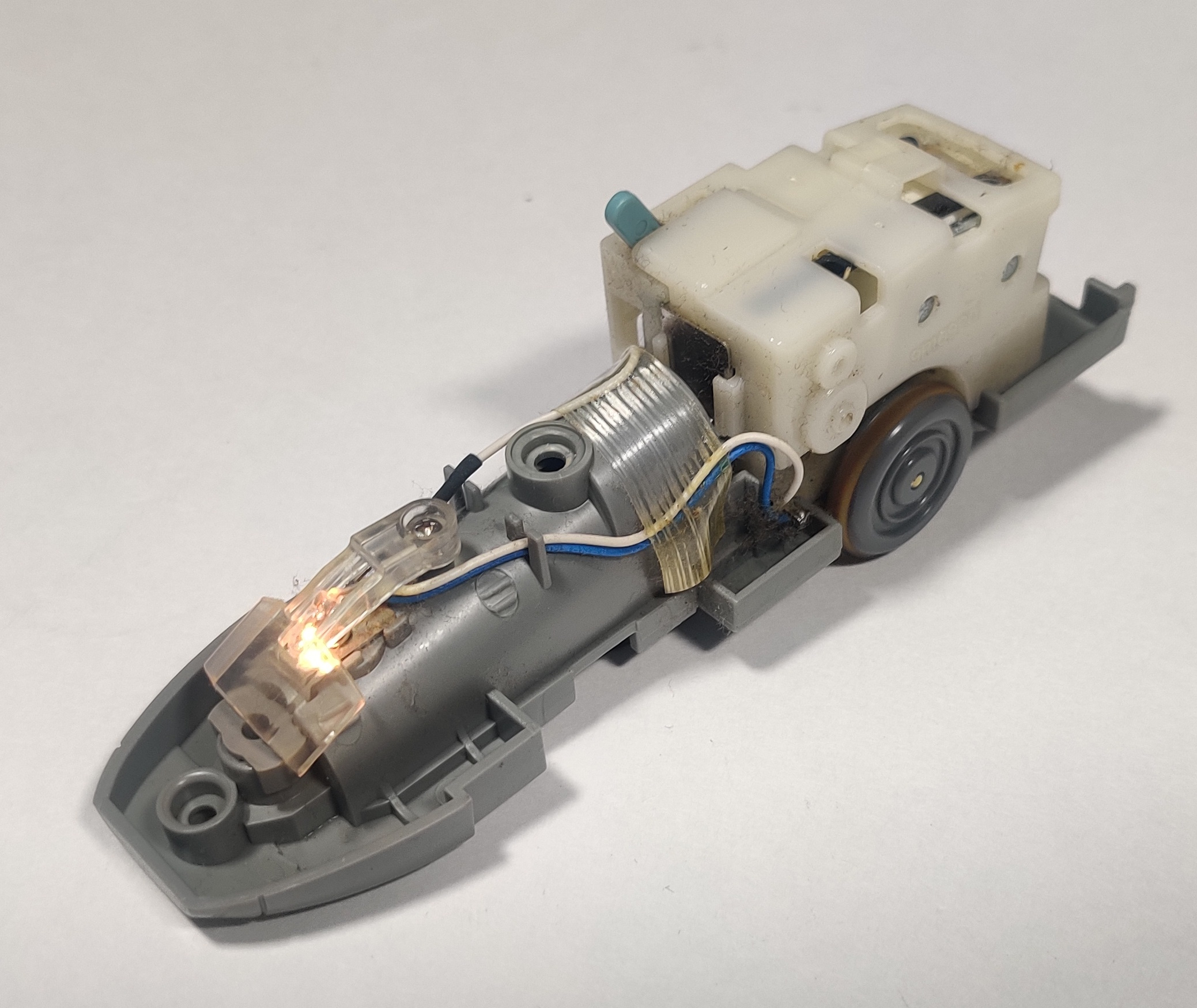
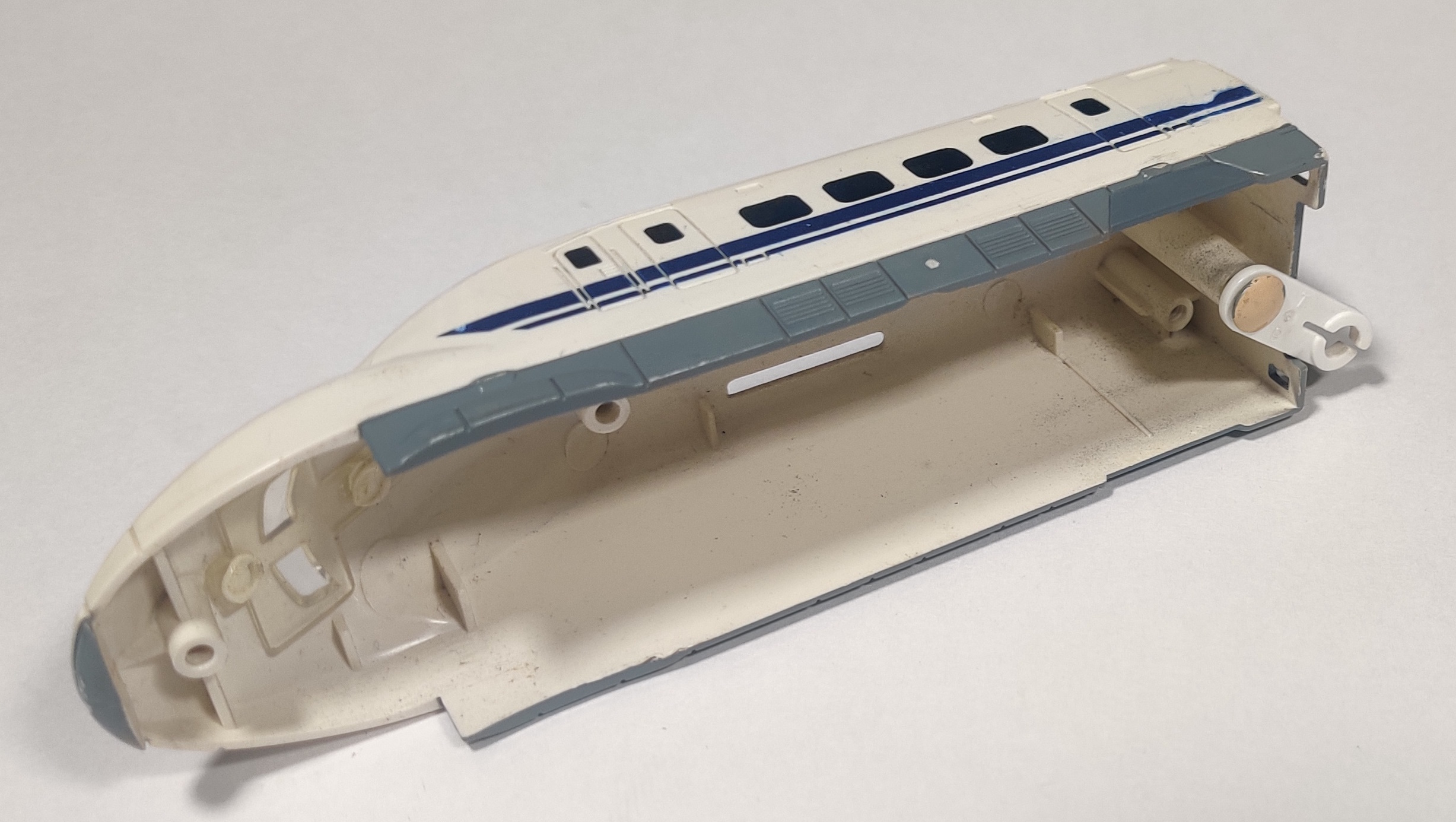
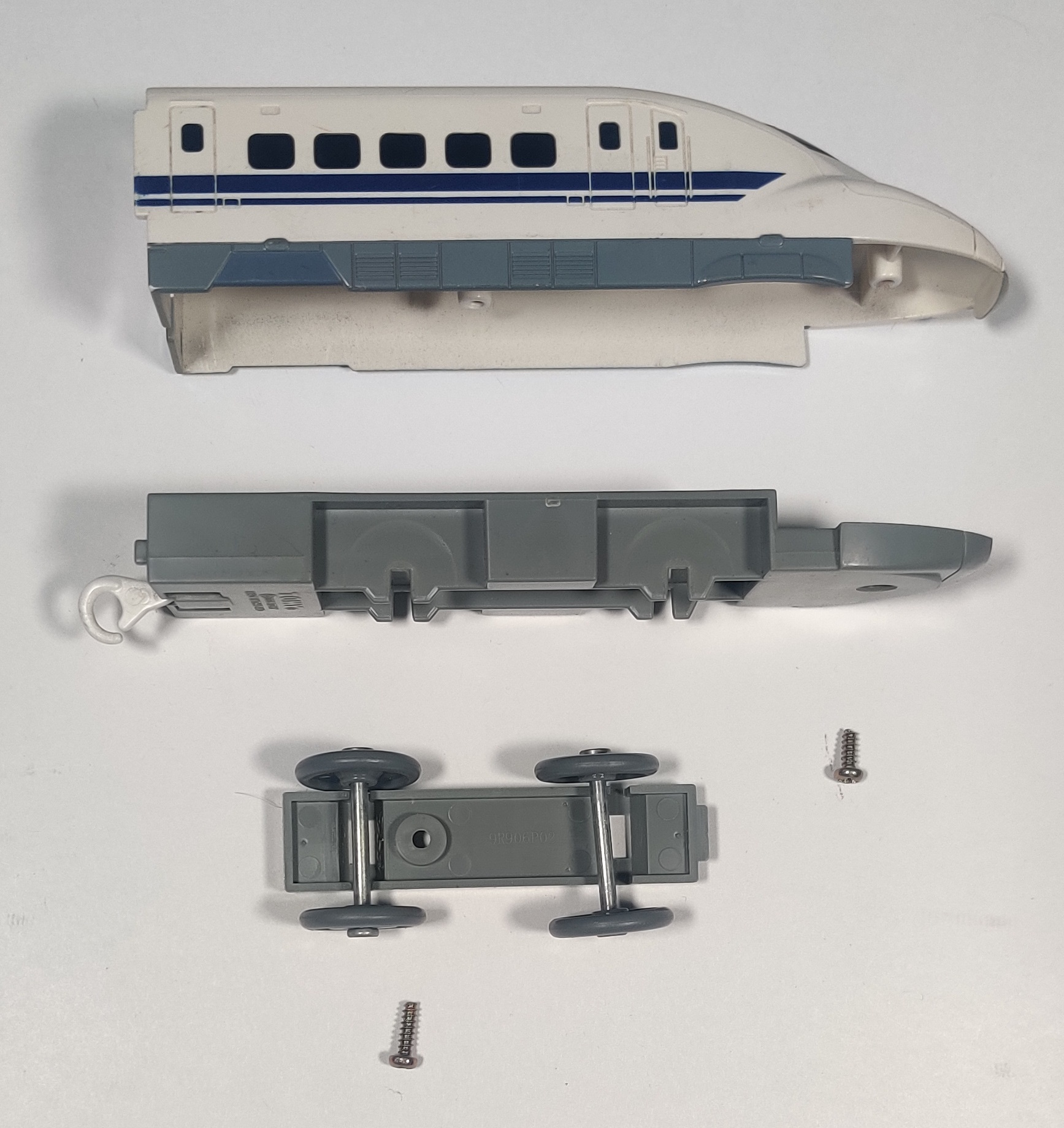
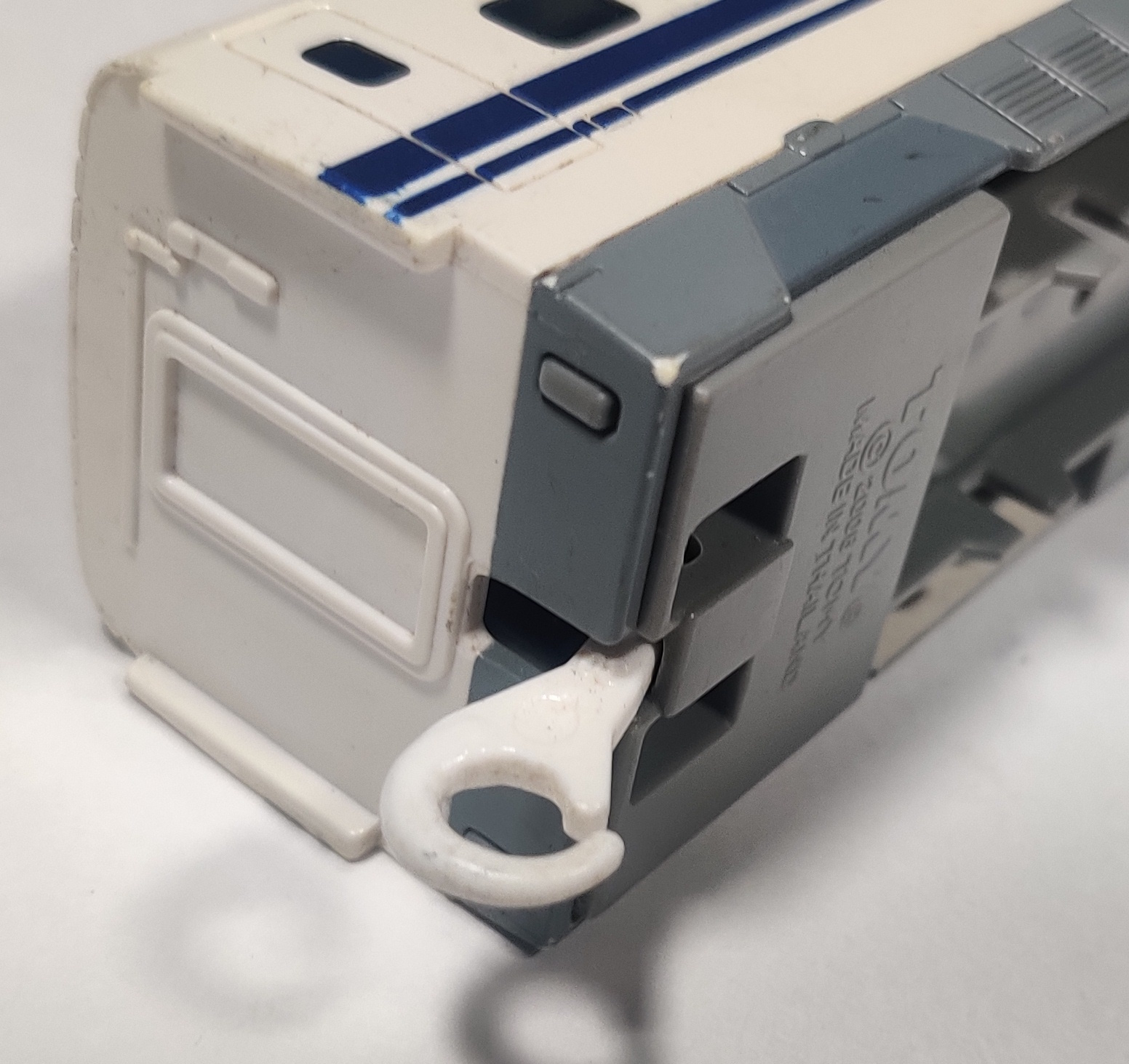
A form of the 700 series still occupies the S-01 spot in the range with S-01 N700A Shinkansen with Light appearing in 2022.